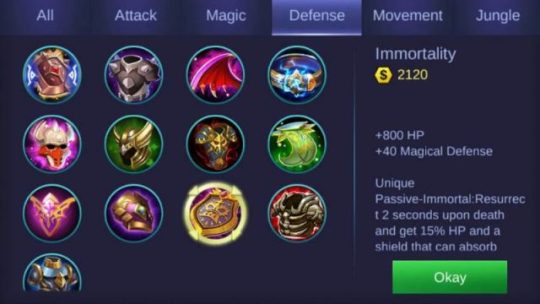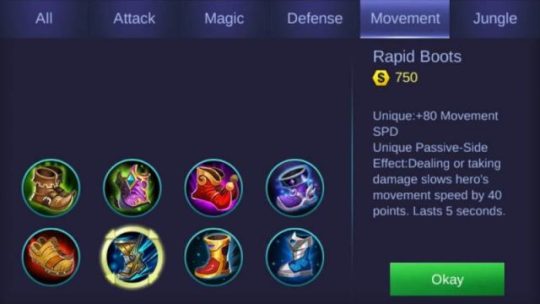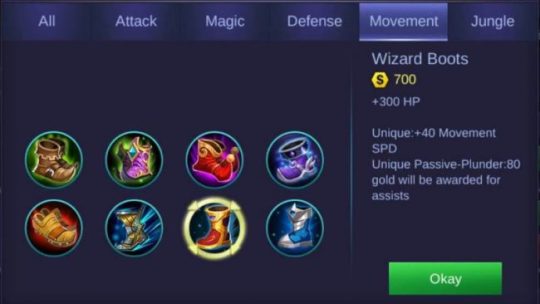#builditems
Explore tagged Tumblr posts
Note
Hi! I hope it’s okay to ask! I’m converting a fireplace from ts4 to ts3 and it won’t show in game. I’ve managed to convert alot of objects and builditems but this model I struggle with alot. I saw your post Keep Warm Collection (love the items) and noticed that you expressed that it was complicated to get the fireplaces working as they should. Have you any tutorial or tips on how to do it? I would be so so grateful! ☺️🙏🏼
Heyo!
The trick with fireplaces is to export them from TSRW as .sims3packs and then use Delphy's Sims 3 Pack Multi-Extracter to convert those .sims3packs to .package files!
19 notes
·
View notes
Text
Manufacturing Production Software | Manufacturing ERP Software
Looking for Manufacturing Production Software, we Gsg Global Solutions are offering Simple yet powerful Manufacturing ERP software that helps small manufacturers organize production. Quick and Easy to access. Manufacturing Software helps you track inventory, build items, and run financial reports. Contact for more information.
Contact: +44 (0)203 951 8553
Website: https://www.gsgglobalsolutions.com/manufacturing-production-software

#gsg#globalsolution#gsgglobalsolution#ERPsoftware#ManufacturingProductionSoftware#ManufacturingERPSoftware#bestManufacturingERPSoftware#leadingManufacturingERPproducers#trackinventory#builditems#runfinancialreports
0 notes
Text
Beginilah Strategi Rotasi Item Mobile Legends yang Perlu Kamu Pahami
Lokalgame - Mulai dari hero musuh yang di lawan sampai performa pertarungan tim yang berbeda dari biasanya. Strategi untuk melakukan rotasi item Mobile Legends kerap sekali terjadi. Kamu sudah berusaha membuat berbagai macam build pada hero andalan kamu, tetapi terkadang improvisasi pada item Mobile Legends juga bisa terjadi dan menguntungkan di kondisi tertentu. Dari sekian banyak rotasi item Mobile Legends yang kamu lakukan, kamu perlu mempertimbangkan beberapa hal yang penting sebelum merubahnya. Untuk lebih jelasnya simak pembahasan berikut ini
Perlukah Immortality

Sering kita melihat atau bahkan diri kita sendiri yang mana ketika late game, menjual sepatu untuk digantikan dengan Immortality. Apakah item tersebut sangat penting untuk hero kita? Jawabannya tidak. Karena sepatu lebih menawarkan movement speed dan efek pasif yang lebih berguna untuk hero kamu. Sebenarnya item Immortality di Mobile Legends itu adalah item khusus untuk para hero Tank, di mana mereka sudah pasti berada di garis depan dan memiliki kemungkinan mati duluan. Sebaiknya jika menggunakan hero seperti Marksman dan Mage, menggunakan Immortality adalah tindakan dari seorang pemain yang pengecut dan selalu berangkapan bahwa dirinya akan bermain secara barbar tanpa perhitungan.
Wizard Boots, Demon Shoes, Atau Rapid Boots

Item seperti sepatu di Mobile Legends memiliki banyak jenisnya dan banyak sekali manfaat yang ditawarkan dari setiap jenis sepatu. Belum lagi sepatu merupakan item Mobile Legends yang paling murah dan memberikan banyak manfaat, Terutama untuk Wizard Boots, Demon Shoes, dan Rapid Boots.

Ketiga item ini sering digunakan oleh para pemain yang memiliki pemahaman bahwa movement speeddi gim MOBA adalah hal yang paling krusial Oleh karenanya Rapid Boots adalah sepatu terbaik di late game, tidak mau kalah Wizard Boots dan Demon Shoes juga menjadi alas kaki idaman di early game. Rotasi item Mobile Legends ini sangat berguna di setiap pertandingan.
Haruskah Membeli Item Berurutan

Hal terakhir yang harus kamu pahami dari rotasi item Mobile Legends ini, apakah build yang kita buat haru kita ikuti secara urutannya? Contohnya adalah hero jungle yang membeli item jungle mereka di awal dan ketika farming lancar, mereka langsung membeli item mahal seperti BOD. Tindakan tersebut memang kadang benar, namun lebih efisien lagi jika kamu bisa menjadikannya dua item seperti Rapid Boots dan Endless Battle yang bisa mengamankan kondisi hero kamu sampai memiliki BOD.

Biasanya tujuan dari membeli item secara berurutan ialah untuk memperkuat serangan hero tersebut secara bertahap, di mana efek dari masing-masing item saling memperkuat satu sama lain. Tapi jika dirasa membeli item mahal terlebih dahulu itu penting, tidak ada salahnya juga. Hanya saja cukup riskan, karena tidak ada item yang bisa membuat kamu kuat bertahan lama di pertempuran. Tidak hanya rotasi item Mobile Legends saja yang perlu kamu perhatikan. Tempat bermain kamu juga perlu mendapatkan perhatian yang lebih Read the full article
#BuildItem#Epicwar#Gaming#MobileLegends#MOONTON#PanduanMobileLegends#RotasiItem#StrategiML#STRATEGY#TIPSdanTRIK
0 notes
Text
Expressing relations between types, part 8
So how could it be shorter with a true dependent type language like Idris?
It's good that we no longer need singleton types and convert types and those singleton types and vise versa, but we still need to write a lot even though instances of DecEq and Show might be able to be derived using elaborator reflection.
import Data.List.Elem import Decidable.Equality.Core data Cat = Cat1 | Cat2 cat1NotCat2 : Cat1 = Cat2 -> Void cat1NotCat2 Refl impossible DecEq Cat where decEq Cat1 Cat1 = Yes Refl decEq Cat2 Cat2 = Yes Refl decEq Cat1 Cat2 = No cat1NotCat2 decEq Cat2 Cat1 = No $ negEqSym cat1NotCat2 Show Cat where show Cat1 = "Cat1" show Cat2 = "Cat2" readCat : String -> Maybe Cat readCat "Cat1" = Just Cat1 readCat "Cat2" = Just Cat2 readCat _ = Nothing data SubCat = SubCat1 | SubCat2 | SubCat3 DecEq SubCat where decEq SubCat1 SubCat1 = Yes Refl decEq SubCat2 SubCat2 = Yes Refl decEq SubCat3 SubCat3 = Yes Refl decEq _ _ = No believe_me Show SubCat where show SubCat1 = "SubCat1" show SubCat2 = "SubCat2" show SubCat3 = "SubCat3" readSubCat : String -> Maybe SubCat readSubCat "SubCat1" = Just SubCat1 readSubCat "SubCat2" = Just SubCat2 readSubCat "SubCat3" = Just SubCat3 readSubCat _ = Nothing validSubCats : Cat -> List SubCat validSubCats Cat1 = [SubCat1, SubCat2] validSubCats Cat2 = [SubCat2, SubCat3] data Item: Cat -> SubCat -> Type where MkItem : Elem subCat (validSubCats cat) -> Item cat subCat data SomeItem : Type where MkSomeItem : Item cat subCat -> SomeItem {cat : Cat} -> {subCat : SubCat} -> Show (Item cat subCat) where show (MkItem _) = "Item " ++ show cat ++ " " ++ show subCat buildItem : (cat : Cat) -> (subCat : SubCat) -> Maybe (Item cat subCat) buildItem cat subCat = let elem = isElem subCat (validSubCats cat) in case elem of Yes elem => Just $ MkItem elem No _ => Nothing makeItem : String -> String -> Maybe SomeItem makeItem cat subCat = do cat <- readCat cat subCat <- readSubCat subCat MkSomeItem <$> buildItem cat subCat
0 notes
Photo
#builditems #kitchen

Vintage Crockery - Assorted kitchenware, cutting boards, boxes & two plants. Patterns are modeled after mid-century bakeware. Ten objects total.
download for free: SIMFILESHARE | PATREON
4K notes
·
View notes
Text
Manufacturing Production Software | Manufacturing ERP Software
In need of Manufacturing ERP Software, Here is one of the top Manufacturing ERP Software in the UK. GSG Global Solutions is one of the best in producing various software and supplies them around the UK. Manufacturing Software helps you track inventory, build items, and run financial reports. Contact for more information.
Website: https://www.gsgglobalsolutions.com/manufacturing-production-software
Contact: +44 (0)203 951 8553

#gsg#globalsolution#gsgglobalsolution#ERPsoftware#ManufacturingProductionSoftware#ManufacturingERPSoftware#bestManufacturingERPSoftware#leadingManufacturingERPproducers#trackinventory#builditems#runfinancialreports
0 notes
Text
Expressing relations between types, part 5
The problem was that we couldn't write oneOf without using unsafeCoerce. This is because the return type (kind) of OneOf is Bool.
type OneOf :: k -> [k] -> Bool type family OneOf t ts where OneOf t (t ': _) = 'True OneOf t (_ ': ts) = OneOf t ts OneOf _ _ = 'False
The compiler cannot be convinced that OneOf t (_ ': ts) is 'True when OneOf t ts is 'True.
If the problem is that it returns Bool, what type should we return? We need a type from which a compiler can see where a specific type is included.
type Elem :: k -> [k] -> Type data Elem t ts where Here :: Elem t (t ': ts) There :: Elem t ts -> Elem t (t' ': ts)
If a value is Here, it means that the type is at the beginning of the list of types. If the value is There Here, the type is the second element in the list. If There (There Here), it's the third element, and so on.
We'll modify the definition of Item to use Elem instead of OneOf.
type Item :: Cat -> SubCat -> Type data Item cat subCat where Item :: forall cat subCat. Elem subCat (ValidSubCats cat) -> Item cat subCat
Instead of having OneOf constraint, we now need to pass a value of Elem explicitly when creating a value of Item. For example, something like this.
item1 = Item @'Cat1 @'SubCat1 Here item2 = Item @'Cat1 @'SubCat2 (There Here)
Then, instead of oneOf, we define hElem which returns Maybe Elem. This function returns Just Here, Just (There Here), Just (There (There Here)) and so on if the specified singletone value is included in the list of singleton values, and return Nothing otherwise.
hElem :: TestEquality f => f x -> HL f xs -> Maybe (Elem x xs) hElem x (HCons y ys) = case testEquality x y of Just Refl -> Just Here Nothing -> There <$> hElem x ys hElem _ _ = Nothing
As you can see, we no longer need unsafeCoerce here.
With these changes, we can now implement buildItem.
buildItem :: SCat cat -> SSubCat subCat -> Maybe (Item cat subCat) buildItem cat subCat = Item <$> hElem subCat (validSSubCats cat)
This buildItem has the same type as the buildItem in the previous post, so you can use it in the same way.
0 notes
Text
Expressing relations between types, part 4
Now, it's time to build an item from strings. But before that, we'll try building an item from singletone values, SCat and SSubCat. Once we can do it, the rest of the work is just parsing these singletone values.
The first thing we need to do is defining a runtime version of ValidSubCats. ValidSubCats works on types, but this time we need a function working on values at runtime.
validSSubCats :: SCat cat -> HL SSubCat (ValidSubCats cat) validSSubCats SCat1 = SSubCat1 `HCons` SSubCat2 `HCons` HNil validSSubCats SCat2 = SSubCat2 `HCons` SSubCat3 `HCons` HNil
The return value of this function is a value of a heterogeneous list HL. HL isn't just a heterogenous list, but a heterogenous list of singletone values. Let's take a look at its definition.
type HL :: (k -> Type) -> [k] -> Type data HL f xs where HCons :: f x -> HL f xs -> HL f (x ': xs) HNil :: HL f '[] infixr 5 `HCons`
As you can see, it takes f which is a cotainer of a value. In our case, it'll be SSubCat. We need it to write a function to check if a specified value is included in a list using propositional equality because TestEquality works on a type indexed by a type.
oneOf :: TestEquality f => f x -> HL f xs -> Maybe (OneOf x xs :~: 'True) oneOf x (HCons y ys) = case testEquality x y of Just Refl -> Just Refl Nothing -> unsafeCoerce $ oneOf x ys oneOf _ _ = Nothing
This function tells the compiler that OneOf x xs must be 'True if y is in ys when you call oneOf y ys.
We'll make SSubCat an instance of TestEquality to make this work.
instance TestEquality SSubCat where testEquality SSubCat1 SSubCat1 = Just Refl testEquality SSubCat2 SSubCat2 = Just Refl testEquality SSubCat3 SSubCat3 = Just Refl testEquality _ _ = Nothing
Now, when you call oneOf sSubCat (validSSubCat sCat) and sSubCat is in the list, the compiler knows that subCat (of type SSubCat subCat) is in ValidSubCats cat (the type of sCat is SCat cat).
With this knowledge, we can build an item from SCat and SSubCat.
buildItem :: SCat cat -> SSubCat subCat -> Maybe (Item cat subCat) buildItem cat subCat = case oneOf subCat (validSSubCats cat) of Just Refl -> Just Item Nothing -> Nothing
You can use buildItem like this.
main :: IO () main = do let item1 = buildItem SCat1 SSubCat2 item2 = buildItem SCat2 SSubCat3 item3 = buildItem SCat2 SSubCat1 mapM_ print $ catMaybes [ SomeItem <$> item1 , SomeItem <$> item2 , SomeItem <$> item3 ]
But wait, you'd have noticed that we use unsafeCoerce in oneOf. We needed it because we couldn't convince the compiler that OneOf x xs must be 'True if y is in ys when you call oneOf y ys.
We'll see how we can avoid unsafeCoerce in the next post.
0 notes
Text
Expressing relations between types, part 1
Let's consider the situation where you have an item that has a category and a sub category. You can express this idea like this.
module Item ( Item , cat , subCat , Cat(..) , SubCat(..) , buildItem , makeItem ) where import Control.Monad (join) import Text.Read (readMaybe) data Cat = Cat1 | Cat2 deriving (Show, Read, Eq) data SubCat = SubCat1 | SubCat2 | SubCat3 deriving (Show, Read, Eq) data Item = Item { cat :: Cat , subCat :: SubCat } instance Show Item where show (Item cat subCat) = "Item " <> show cat <> " " <> show subCat
But there are some restrictions between its category and sub category. If its category is Cat1, its sub category must be one of SubCat1 or SubCat2. If its category is Cat2, its sub category must be one of SubCat2 or SubCat3.
To prevent someone from creating an invalid item, we can check this relation in a factory function buildItem, and export it from the module without exporting Item data constructor.
validSubCats :: Cat -> [SubCat] validSubCats Cat1 = [SubCat1, SubCat2] validSubCats Cat2 = [SubCat2, SubCat3] buildItem :: Cat -> SubCat -> Maybe Item buildItem cat subCat | subCat `elem` validSubCats cat = Just $ Item cat subCat buildItem _ _ = Nothing makeItem :: String -> String -> Maybe Item makeItem cat subCat = join $ buildItem <$> readMaybe cat <*> readMaybe subCat
This works, but is it possible to put this a bit further and express this relation in types? I'll try it in this series of posts. The goal is expressing this relation in types while supporting building an item from strings and printing it.
For example, you can write something like this with the current code. How will it look like after we make it type-safe?
main :: IO () main = do let items :: [Item] items = catMaybes [ buildItem Cat1 SubCat2 , makeItem "Cat2" "SubCat3" , makeItem "Cat2" "SubCat1" ] mapM_ print items
0 notes